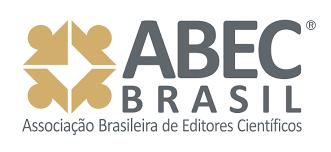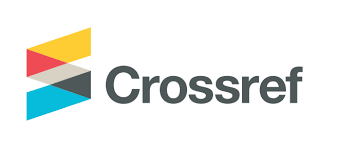AS PRINCIPAIS TÉCNICAS UTILIZADAS PARA REMOÇÃO DE CORANTES DAS ÁGUAS RESIDUAIS DA INDÚSTRIA TÊXTIL: UMA REVISÃO
DOI:
https://doi.org/10.22407/1984-5693.2022.v14.p.e20221406Resumo
A indústria têxtil gera uma grande quantidade de águas residuais durante seus processos produtivos. Entre os compostos químicos encontrados nesses efluentes, estão os corantes que possuem difícil degradação e são tóxicos para o meio ambiente. Este estudo apresenta uma visão geral sobre as principais técnicas utilizadas para tratamento das águas residuais da indústria têxtil, analisando o funcionamento e a eficiência de cada técnica. Atualmente, as técnicas mais aplicadas são adsorção, coagulação e floculação, filtração por membrana, processos biológicos e processos oxidativos avançados. A adsorção é um método muito aplicado para remoção de corantes, sendo utilizado geralmente o carvão ativado como adsorvente. A coagulação e floculação envolve a adição de produtos químicos para coagular os sólidos coloidais e facilitar sua remoção por sedimentação floculenta. A filtração por membrana inclui as técnicas de microfiltração, ultrafiltração, nanofiltração e osmose reversa. O tratamento biológico pode ser realizado por processos aeróbios, anaeróbios ou uma combinação de ambos. Por fim, os processos oxidativos avançados utilizam fortes agentes oxidantes para a degradação de poluentes e compreendem os métodos de ozonização, fotocatálise, processos Fenton e Foto-Fenton. Uma vez que cada técnica possui vantagens e desvantagens, deve ser realizada uma avaliação criteriosa para a escolha da técnica apropriadavlevando em conta os custos e os benefícios. Ademais, observa-se que a utilização de processos combinados poderá suprir as deficiências apresentadas pelos processos quando são utilizados individualmente.
Referências
ABIT - ASSOCIAÇÃO BRASILEIRA DA INDÚSTRIA TÊXTIL E DE CONFECÇÃO. Cartilha Indústria Têxtil e de Confecção Brasileira - Cenários, Desafios, Perspectivas e Demandas. Brasília, 2013.
AHILE UJ; WUANA RA; ITODO AU; SHA’ATO R; DANTAS RF. A review on the use of chelating agents as an alternative to promote photo-Fenton at neutral pH: Current trends, knowledge gap and future studies. Science of The Total Environment 710, 134872-134872, 2020.
AKBARI A; DESCLAUX S; REMIGY JC; APTEL P. Treatment of textile dye effluents using a new photografted nanofiltration membrane. Desalination 149(1–3), 101-107, 2002.
ALCÂNTARA MR; DALTIN D. A química do processamento têxtil. Química Nova 19 (3), 320-330, 1996.
ARSLAN-ALATON I; GURSOY BH; SCHMIDT J. Advanced oxidation of acid and reactive dyes: Effect of Fenton treatment on aerobic, anoxic and anaerobic processes. Dyes and Pigments 78 (2), 117-130, 2008.
BALAMURUGAN B; THIRUMARIMURUGAN M; KANNADASAN T. Anaerobic degradation of textile dye bath efluente using Halomonas sp. Bioresource Technology 102 (10), 6365-6359, 2011.
BALARAK D; JAAFARI J; HASSANI G; MAHDAVI Y; TYAGI I; AGARWAL S; GUPTA VK. The use of low-cost adsorbent (Canola residues) for the adsorption of methylene blue from aqueous solution: Isotherm, kinetic andthermodynamic studies. Colloids and Interface Science Communications 7, 16–19, 2015.
BANERJEE S; CHATTOPADHYAYA MC. Adsorption characteristics for the removal of a toxic dye, tartrazine from aqueous solutions by a low cost agricultural by-product. Arabian Journal of Chemistry 10, S1629-S1638, 2017.
BETHI B; SONAWANE SH; BHANVASE BA; GUMFEKAR SP. Nanomaterials-based advanced oxidation processes for wastewater treatment: A review. Chemical Engineering and Processing - Process Intensification 109, 178-189, 2016.
CLARIZIA L; RUSSO D; SOMMA ID; MAROTTA R; ANDREOZZI R. Homogeneous photo-Fenton processes at near neutral pH: A review. Applied Catalysis B: Environmental 209, 358-371, 2017.
DAÂSSI D; FRIKHA F; ZOUARI-MECHICHI H; BELBAHRI L; WOODWARD S; MECHICHI T. Application of response surface methodology to optimize decolourization of dyes by the laccase-mediator system. Journal of Environmental Management 108, 84-91, 2012.
SPAGNI A; GRILLI S; CASU S; MATTIOLI D. Treatment of a simulated textile wastewater containing the azo-dye reactive orange 16 in an anaerobic-biofilm anoxic–aerobic membrane bioreactor. Biodegradation 64 (7), 676-681, 2010.
SREEJA PH; SOSAMONY KJ. A Comparative Study of Homogeneous and Heterogeneous Photo-fenton Process for Textile Wastewater Treatment. Procedia Technology 24, 217–223, 2016.
STALTER D; MAGDEBURG A; WEIL M; KNACKER T; OEHLMANN J. Toxication or detoxication? In vivo toxicity assessment of ozonation as advanced wastewater treatment with the rainbow trout. Water Research 44 (2), 439-448, 2010.
STAVROPOULOS GG. A fundamental approach in liquid phase adsorption kinetics. Fuel Processing Technology 92 (10), 2123-2126, 2011.
SZYGUŁA A; GUIBAL E; PALACÍN MA; RUIZ M; SASTRE AM. Removal of an anionic dye (Acid Blue 92) by coagulation–flocculation using chitosan. Journal Environmental Management 90, 2979–2986, 2009.
TEH CY; BUDIMAN PM; SHAK KPY; WU TY. Recent Advancement of Coagulation–Flocculation and Its Application in Wastewater Treatment. Industrial & Engineering Chemistry Research 55(16), 4363–4389, 2016.
TEHRANI-BAGHA AR; MAHMOODI NM; MENGER FM. Degradation of a persistent organic dye from colored textile wastewater by ozonation. Desalination, 260(1–3), 34–38, 2010.
VERMA AK; DASH RR; BHUNIA P. A review on chemical coagulation/flocculation technologies for removal of colour from textile wastewaters. Journal of Environmental Management 93 (1), 154-168, 2012.
WANG JL; XU LJ. Advanced Oxidation Processes for Wastewater Treatment: Formation of Hydroxyl Radical and Application. Critical Reviews in Environmental Science and Technology 42 (3), 251-325, 2012.
XIA H; LI C; YANG G; SHI Z; JIN C; HE W; XU J; LI G. A review of microwave-assisted advanced oxidation processes for wastewater treatment. Chemosphere 287, 131981-131981, 2022.
YAGUB MT; SEN TK; AFROZE S; ANG HM. Dye and its removal from aqueous solution by adsorption: A review. Advances in Colloid and Interface Science 209, 172-184, 2014.
ZOLLINGER H. Color chemistry: syntheses, properties and applications of organic dyes and pigments. 2.ed. rev. Weinheim, VCH, 1991.
Downloads
Publicado
Edição
Seção
Licença
Copyright (c) 2022 Revista Eletrônica Perspectivas da Ciência e Tecnologia - ISSN: 1984-5693

Este trabalho está licenciado sob uma licença Creative Commons Attribution-NonCommercial 4.0 International License.
Autores que submetem trabalhos a esta conferência aceitam que esta revista, bem como todo e qualquer trabalho publicado nela, estão sob licença Creative Commons 4.0 do tipo: CC BY - NC











